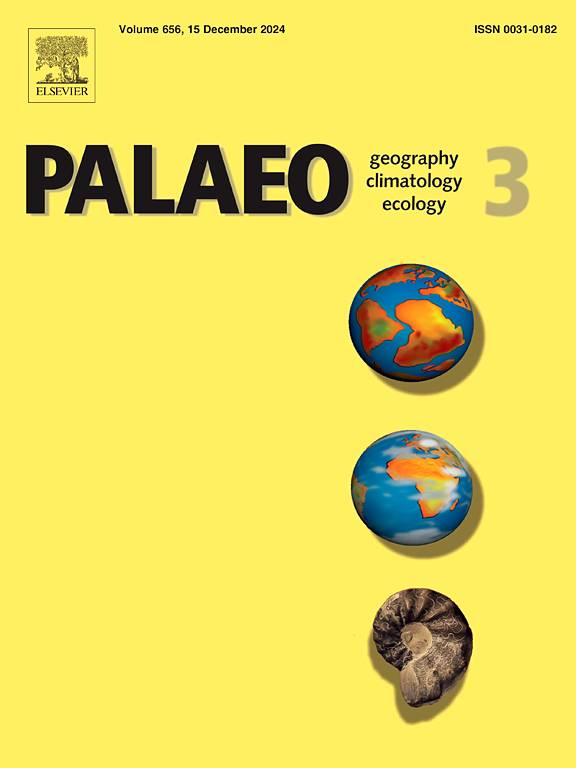Intra-oceanic arc origin of the northern Beishan Orogenic Belt (NW China): implications for the palaeogeographic interpretation of Precambrian zircons and insights into crustal growth
IF 2.7
2区 地球科学
Q2 GEOGRAPHY, PHYSICAL
Palaeogeography, Palaeoclimatology, Palaeoecology
Pub Date : 2025-07-02
DOI:10.1016/j.palaeo.2025.113117
引用次数: 0
Abstract
The Queershan arc complex, located in the northern Beishan Orogenic Belt of the Altaids, has been widely classified as an intra-oceanic arc (IOA) system; however, the occurrence of Precambrian zircons challenges the IOA origin, implying contributions from reworked continental crust. In this paper, we reconstruct the palaeogeographic evolution of the Queershan arc complex based on sedimentary facies analysis and zircon U-Pb-Hf data. The Queershan complex comprises a Carboniferous–Permian IOA unit (357–289 Ma) with a Mariana-like petrological sequence, originating from the subduction of an oceanic plate beneath a remnant Devonian arc terrane (398–364 Ma). Precambrian zircon xenocrysts in the IOA unit spanning a broad age range from 2557 Ma to 542 Ma, match those in forearc deposits, suggesting assimilation from subducted sediment. The distribution of Hf model ages of zircons in the Queershan arc complex demonstrates juvenile crustal growth from Late Neoproterozoic to Late Palaeozoic times with a peak at 442 Ma. Our findings show that the occurrence of Precambrian zircon grains does not necessarily negate a relatively juvenile origin for IOAs.
北山造山带北部洋内弧成因:对前寒武纪锆石古地理解释和地壳生长的启示
位于阿尔泰山北山造山带北部的奎尔山弧杂岩,被广泛地归类为一个洋内弧系统;然而,前寒武纪锆石的出现挑战了IOA的成因,暗示了大陆地壳改造的贡献。本文基于沉积相分析和锆石U-Pb-Hf资料,重建了祁尔山弧杂岩的古地理演化。吉尔山杂岩体由石炭-二叠纪IOA单元(357-289 Ma)组成,具有类似马里亚纳的岩石学层序,起源于残余泥盆纪弧地体(398-364 Ma)下大洋板块的俯冲作用。IOA单元的前寒武纪锆石异晶年龄在2557 ~ 542 Ma之间,与弧前沉积的锆石异晶年龄相符,表明其同化作用来自俯冲沉积。Queershan弧杂岩中锆石Hf模式年龄的分布反映了晚新元古代至晚古生代的幼年地壳生长,峰值在442 Ma。我们的研究结果表明,前寒武纪锆石颗粒的出现并不一定否定ioa的相对年轻起源。
本文章由计算机程序翻译,如有差异,请以英文原文为准。
求助全文
约1分钟内获得全文
求助全文
来源期刊
CiteScore
5.90
自引率
10.00%
发文量
398
审稿时长
3.8 months
期刊介绍:
Palaeogeography, Palaeoclimatology, Palaeoecology is an international medium for the publication of high quality and multidisciplinary, original studies and comprehensive reviews in the field of palaeo-environmental geology. The journal aims at bringing together data with global implications from research in the many different disciplines involved in palaeo-environmental investigations.
By cutting across the boundaries of established sciences, it provides an interdisciplinary forum where issues of general interest can be discussed.

 求助内容:
求助内容: 应助结果提醒方式:
应助结果提醒方式:


